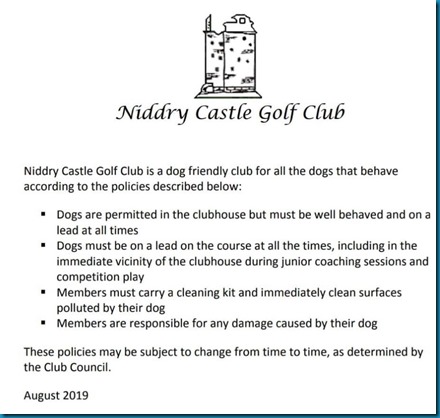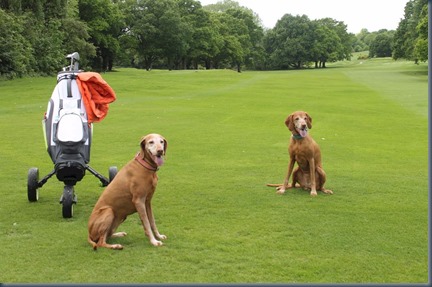If you are a dog-lover and your club does not allow them, what is the best way to introduce them? Despite the popularity of our canine friends who we love having at our side at all times, one time they are regularly unwelcome is playing a round. Which is ironic because as much as we love the game, one could argue that most dogs would love a 4 hour walk with their human even more.
Playing a round with your dog in tow is an ancient and hallowed tradition in the sport of golf. Golf was originally a sport of gentlemen who shot birds in the winter and “birdies” in the summer…and they were accompanied by their trusty hounds during both. Britain (especially the home of golf, Scotland) is the most dog friendly golfing nation in the world with over 500 courses that welcome dogs, including some of the most prestigious ones like St. Andrews, Muirfield, Sunningdale and Wentworth. And yet, despite all of the heritage and popularity, the vast majority of courses still prohibit dogs. Only about 25% in the UK are dog-friendly and golfing with dogs in the USA is rarer than a par 3 albatross).
Here are three progressive steps that you and your club can take to breakdown the barriers to dogs on the fairways:
- Charity Event – The best place to start is to propose a charity event (ideally benefitting a dog related organization like Battersea Dog’s Home, Hounds for Heroes or RSPCA). The event would require all competitors to bring a dog along. Extra fun with forfeits for misbehaving dogs (e.g. barking at inappropriate times, stepping on the greens, etc).
- Special Time Slot – Assuming everyone has a delightful time at the event and the dogs are better behaved than expected, the next step is to propose a special time slot (probably the period with lowest usage) when dogs could be allowed. Of course, the period should be accompanied by strict rules (no dogs on greens, all waste picked up, dogs on leads and under control, courtesy to other members).
- Restricted Access – If the restricted time slots goes well, then you are in a position to propose expanding the hours that dogs are allowed while maintaining a number of provisos to keep everyone happy.
- One critical negotiation tactic is to propose that any venture into dog friendliness be “trialed” for a set period. This approach is the best way to overcome imagined and speculative trepidations (e.g. http://doggolf.info/index.php/2020/06/20/im-only-thinking-of-fido). My experience is that once properly experienced, the dog lovers appreciate it even more than they thought they would and the non-dog lovers are less bothered than they anticipated (or at least the objections that they raised are less substantiated by actual practice).
Dog ownership has grown by over 10% during the pandemic, with 34% of households now having a dog. The “Dog Whisperer” Caesar Millan preaches that the most important aspect to a dog’s happiness and good behaviour is adequate exercise. And a 4-hour walk is most dogs’ dream. Then, even if you have a terrible round, at least you have the silver lining of having given the dog a great walk.






